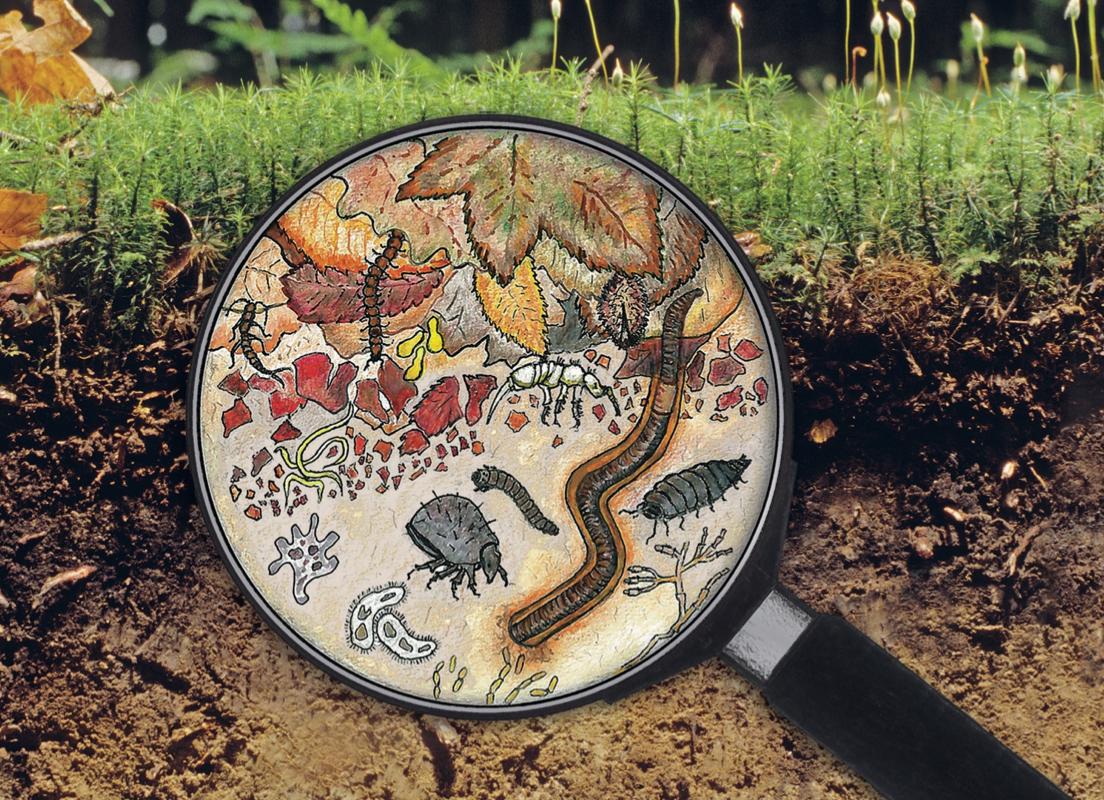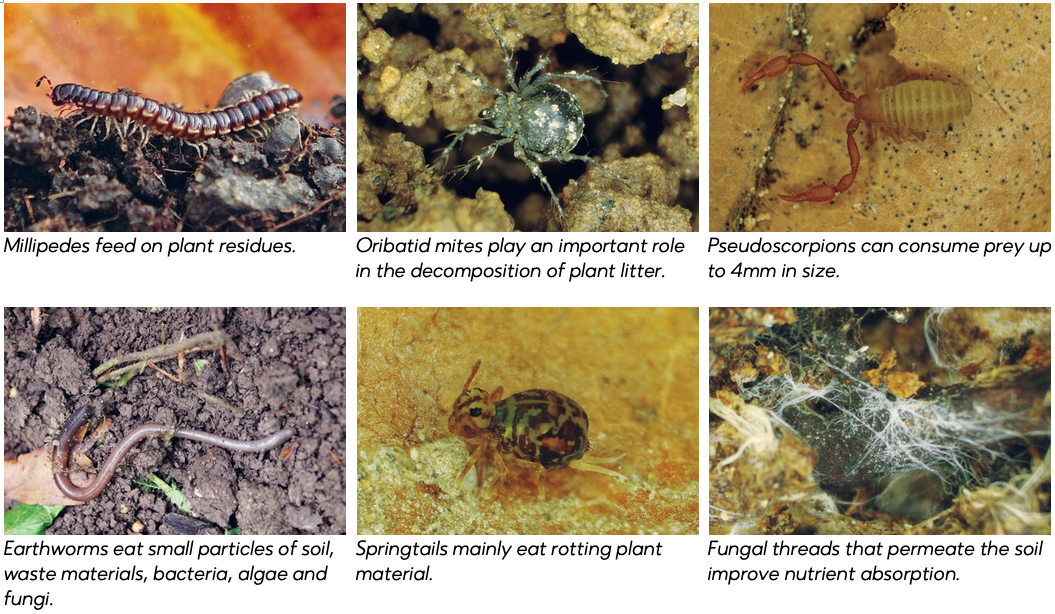Fascinating soil
Soil: The basis of life
Soil is the uppermost, living layer of the Earth’s crust. Its width can range from a few centimetres to several metres. It takes about 10,000 – 20,000 years to form 1 metre of soil. In our latitudes, about 0.1 mm of new soil is formed each year. This top layer consists of humus that results from the decomposition and weathering of plant residues and is particularly rich in nutrients.
Healthy soils are of key importance, because they provide indispensable ecosystem services; soil systems filter, store and regulate water, provide habitat for many soil organisms, provide nutrient cycles, deplete toxic substances and store CO2. Sustainably managed soils enhance the resilience of agricultural systems and are better able to adapt to changing climatic conditions while also contributing to the reduction of greenhouse gases in the atmosphere.

Soils are under pressure
In contrast, soil degradation has increased dramatically over recent decades. In particular, intensive forestry and agriculture cause problems for soils. Monoculture systems, mineral fertilisers, artificial pesticides and the frequent use of heavy machinery can destroy the soil structure, leach the soils and poison natural ecosystems. We are already feeling the effects of climate change. The incidence of storms and floods is rising year on year. Fertile soils are increasingly being eroded with the result that yields continue to decline. In Switzerland alone, some 840,000 t of soil is literally being washed downstream.
Our own patterns of consumption also represent a challenge to soils. Increases in meat consumption and food waste gobble up valuable areas of land that could often be used much more efficiently and sustainably.
Giving the soil a voice
For the most part, the ground at our feet is not an object of our observation or contemplation; it is just there and is being treated like some dead mass, because it eludes our direct perception. One of the most important goals of our Sounding Soil project is to give people a sensory experience of the processes and life in the soil and thus strengthen public awareness of healthy soils.
The orchestra of soil animals
In the recordings of Sounding Soil, ground animals such as springtails, mites, centipedes, beetles, isopods, fly larvae, earthworms, spiders, orthoptera (grasshoppers) and cicadas can be heard. The majority of soil fauna make noises when moving through the soil or eating. A few also make use of the soil to communicate with each other. In addition, animals can also be heard who live on the soil, using it as a communication medium by generating vibrations that can be picked up by their conspecifics via the legs or body.
Soil fauna produce different noises – according to the size and structure of their body as well as their behavior: the greater the variety of animal sounds you can hear in a recording, the more diverse is the soil fauna.
A healthy soil is home to a wide range of plants, animals and mushrooms. It ensures the basic soil functions such as the decomposition of vegetable litter and nutrient cycling. The more diverse the creatures living in the soil are, then the higher is the functional redundancy of the ecosystem, i.e., if individual species are missing, their function can be taken up by other species in the soil. A wide variety of animals indicates a healthy soil ecosystem.

Variety of sounds
In the Sounding Soil research project, we have attempted to acoustically measure soil biodiversity based on what are known as acoustic indices. We have already been able to identify distinct differences at the various locations of this sound map. For example, conventionally managed arable land is quieter and exhibits fewer different noises than an organically managed meadow. Forest soil is also rather quieter, since this type of soil is generally cooler and the soil fauna there are less active than in a sun-kissed meadow.
Often it is not only the noises of soil fauna that can be heard but also physical sources, such as rain as it hits the ground and seeps away, or wind moving the vegetation on the soil surface that is audible as a rumbling in the soil. Furthermore, other environmental noise can also be heard in the soil (building sites, traffic, airplanes).
How can we protect our soils?
Soils have a wide range of functions and provide diverse services to ecosystems and so warrant even greater protection. We must use them in a more sustainable way as only then will future generations be able to benefit from healthy soils.
Our actions in daily life can help to maintain and protect the soils. What we as consumers buy will determine whether agriculture in Switzerland can become sustainable: buy seasonal foodstuffs produced regionally, if possible organic and give up meat on certain days.
Irrespective of whether you have an allotment, a domestic garden or just a balcony, we can all do something to protect soils. Organic gardens help to maintain the diversity of species on both the land and in the soil. Composting plays an important role, because it converts waste into valuable, nutrient-rich humus. It is also very important for the soil animals that the soil is always covered and vegetated, because many of the organisms feed on plant remains.
Act now!
Society depends upon healthy soils – more than 90 % of our food is grown in or on them. We, i.e. civil society, politicians, industry and agriculture, have the means and ways to protect the soil and conserve it for future generations. We need a greater emphasis on educational activities that explain the importance of soil protection. Decision-makers in both politics and industry must act and introduce the required measures without further delay. It is still not too late but it is high time that we afforded greater attention and protection to soil as a valuable resource.